Gothic Period (1200-1400 AD)
1/24
There's no tags or description
Looks like no tags are added yet.
Name | Mastery | Learn | Test | Matching | Spaced |
|---|
No study sessions yet.
25 Terms
Name the art/arch achievements of Gothic Period.
Santa Maria in Trastevere, Rome
Duomo, Florence
Altarpieces, Florence
Frescoes, Assisi
Scrovegni Chapel, Padua
Characteristics of the Gothic Period
political division and economic expansion
Northern Italy dominated by independent and wealthy city-states
Papacy becomes significant international force
1309: Papal court moves to Avignon
Rome produces little to no art/arch for most of the 14th century
Santa Maria in Trastevere (“across the Tiber”), Rome (1130-1143 AD)
Christian house-church
1st dedicated to Mary in Rome
3rd century = Pope Calixtus
12th century = rebuilt under Pope Innocent II
no transept
apse mosaics
Apse Mosaics of Santa Maria in Trastevere (1291-1300 AD)
Four from life of Mary:
The Nativity of Mary
The Annunciation
The Presentation at the Temple
The Dormition of the Virgin
artist: Pietro Cavallini
patron: Bertoldo Stefaneschi
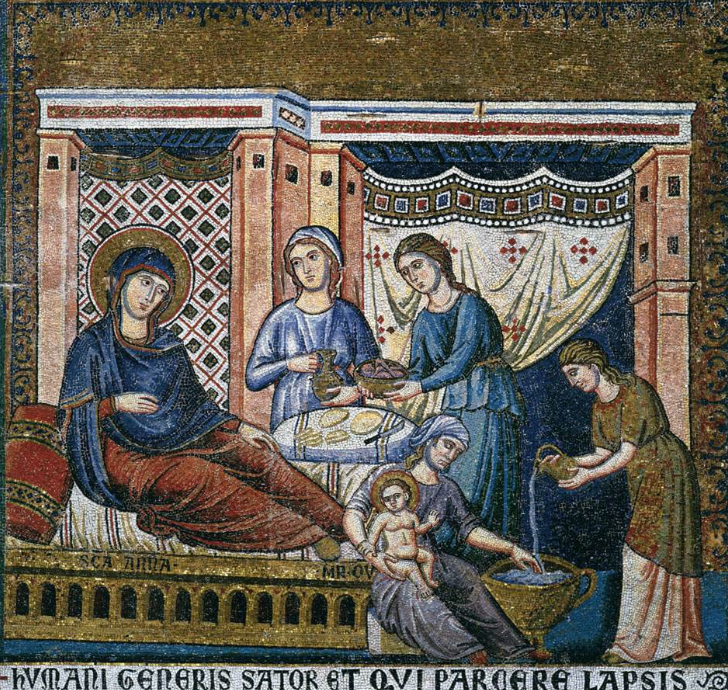
NATIVITY OF MARY
gold background
shading and super tiny tesarae
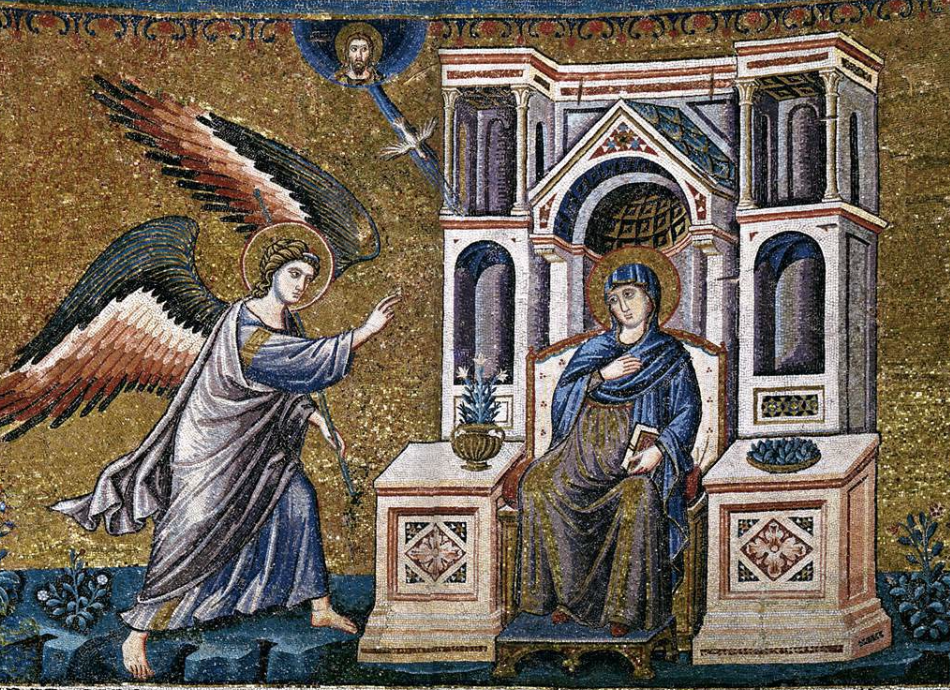
ANNUNCIATION
scepter of Gabriel
still wears toga
Mary has little emotion
architecture is detailed but perspective is off
shading
plant with 3 flowers = trinity
image of God the Father in human form (not just a hand)
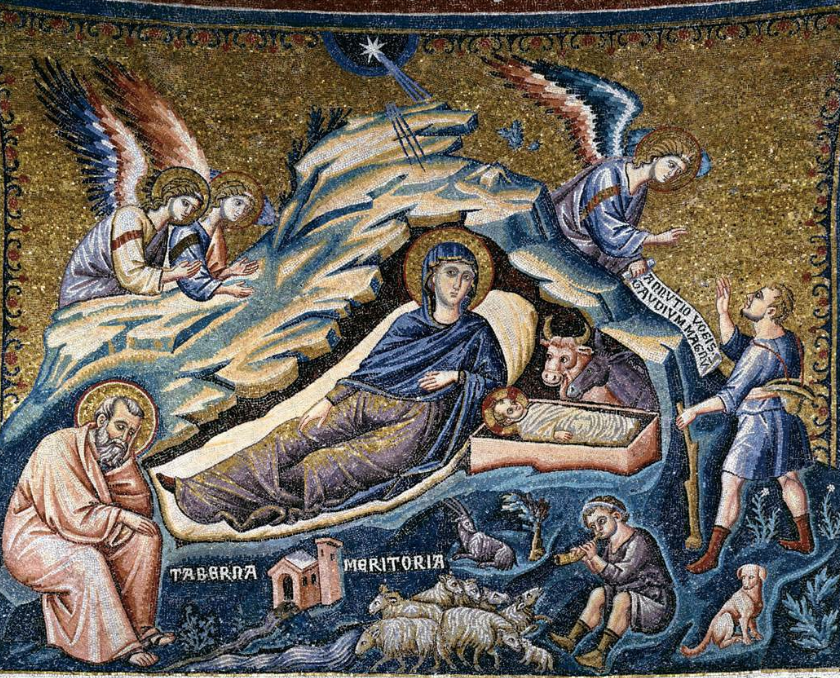
NATIVITY OF CHRIST
in a cave (Byzantine tradition)
taverna meritoria - building that the original church was founded on
Joseph looks like a pensive philosopher
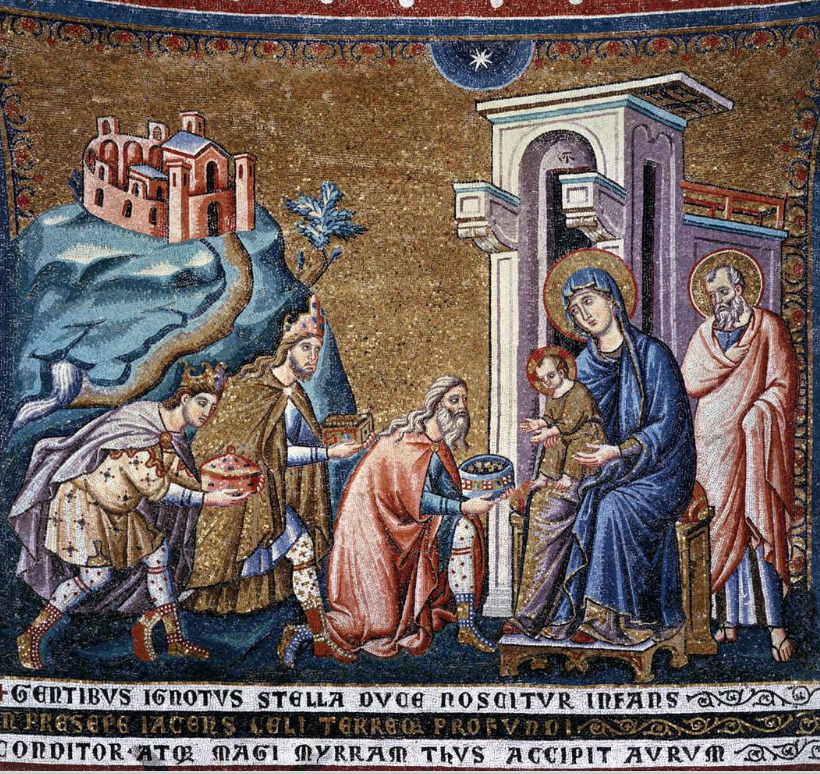
ADORATION OF THE MAGI
young, middle aged, old
classic pose and dress of Joseph
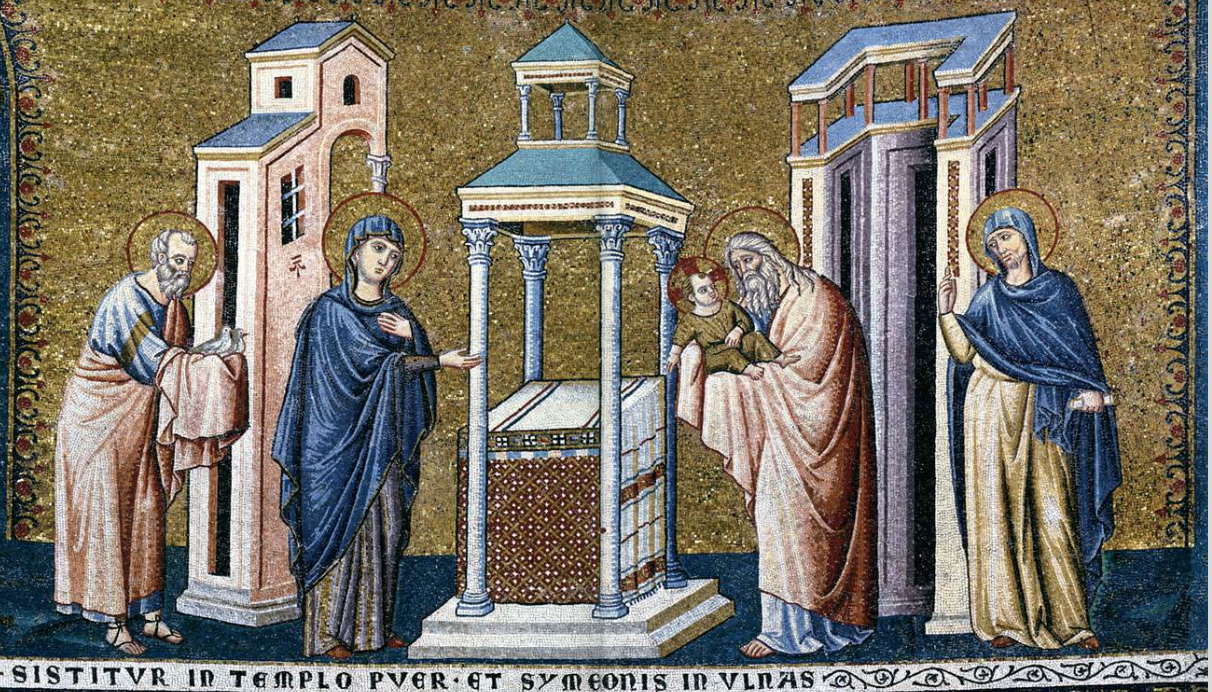
PRESENTATION AT THE TEMPLE
2 doves
gaze between Jesus and Simeon (emotion)
3D is trying to happen in architectural background
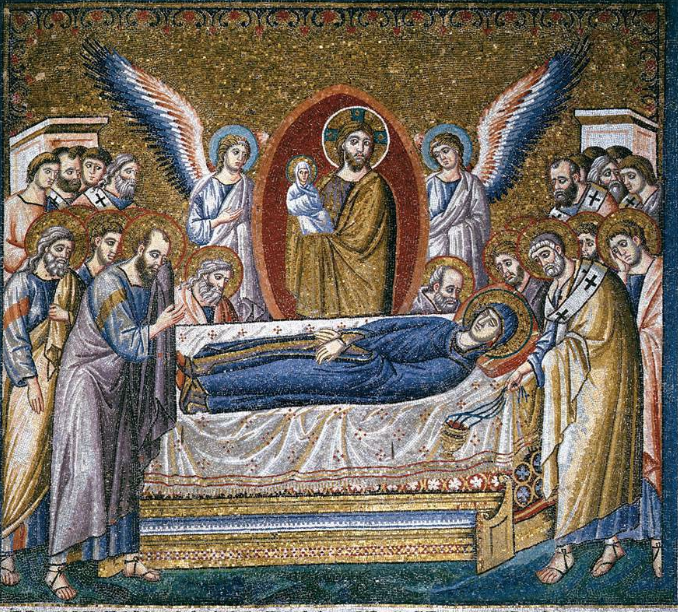
DORMITION OF THE VIRGIN
Mandola
Mary’s soul is a baby in Christ’s arms
dormition
term used in the Eastern Church, literally the “falling asleep” (death) of Mary the Theotokos and her being taken up into heaven
mandorla
an almond-shaped nimbus surrounding the figure of Christ or another sacred figure (extra holiness)
The Duomo, Florence (1296 into 14th century)
Baptistry is Romanesque
plan by Amolfo di Cambio
tall nave
rib vaults
duomo
cathedral in Italian
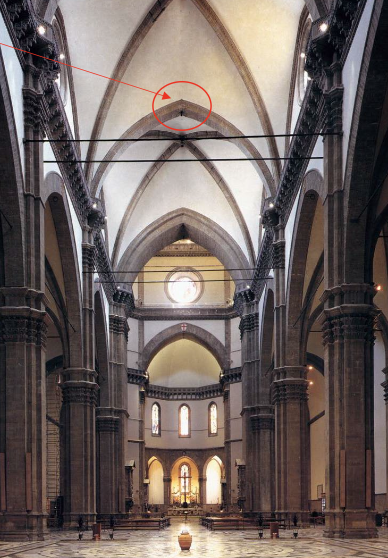
rib vault
“key” to Gothic arch; a vault in which the diagonal transverse ribs compose a structural skeleton that partially supports the masonry web between them
altarpiece
a panel, painted or sculpted, situated above and behind an altar
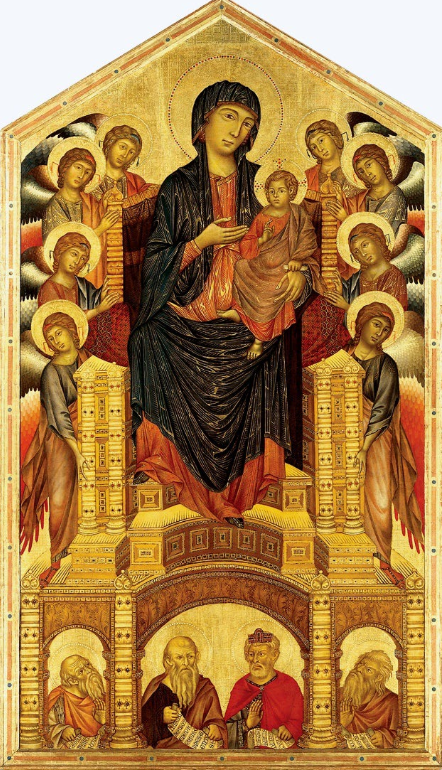
Altarpiece Virgin and Child Enthroned, Florence (1280)
artist: Cimabue
Church of Santa Trinità
tempera and gold on wood panel
attempt at perspective
a lot of Byzantine style
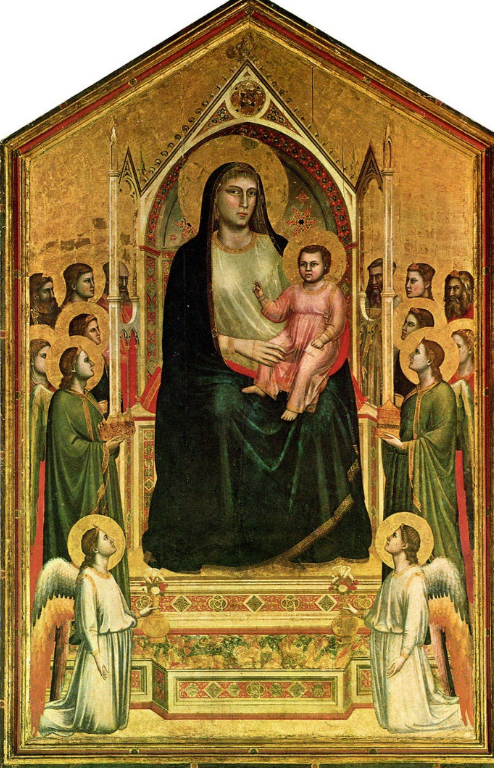
Altarpiece Virgin and Child Enthroned, Florence (1310)
artist: Giotto
much more realistic
retains some Byzantine dimensions but style moves toward Renaissance
Mary’s head is straight and looks at viewer: humanizing Mary
tempera and gold on wood panel
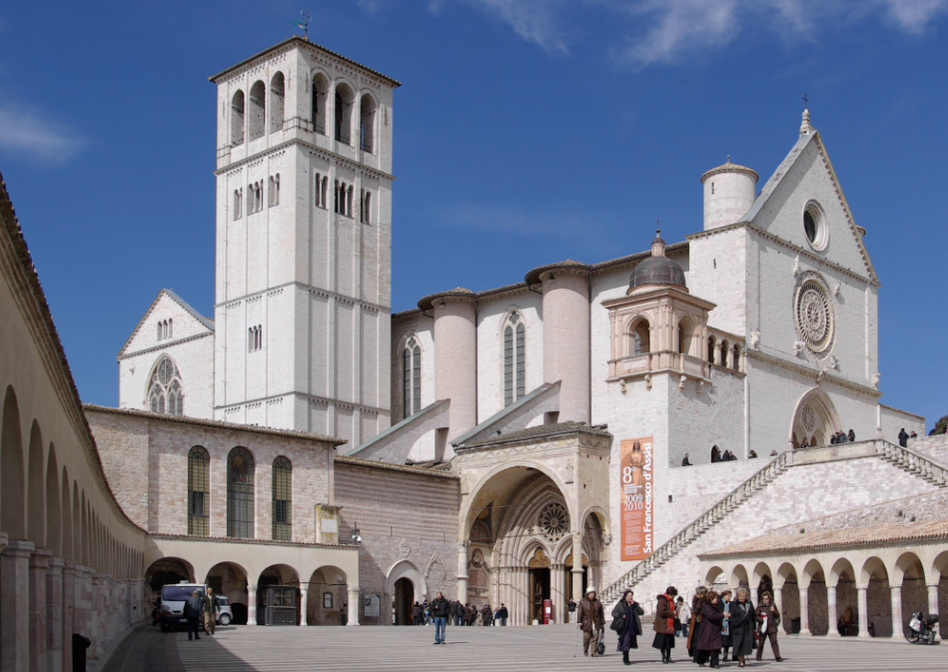
Basilica of Saint Francis, Assisi (1228-1236 AD)
lower and upper basilica
lower basilica - CIMABUE, dry frescoes
upper basilica - GIOTTO, true fresco by using giornatta technique
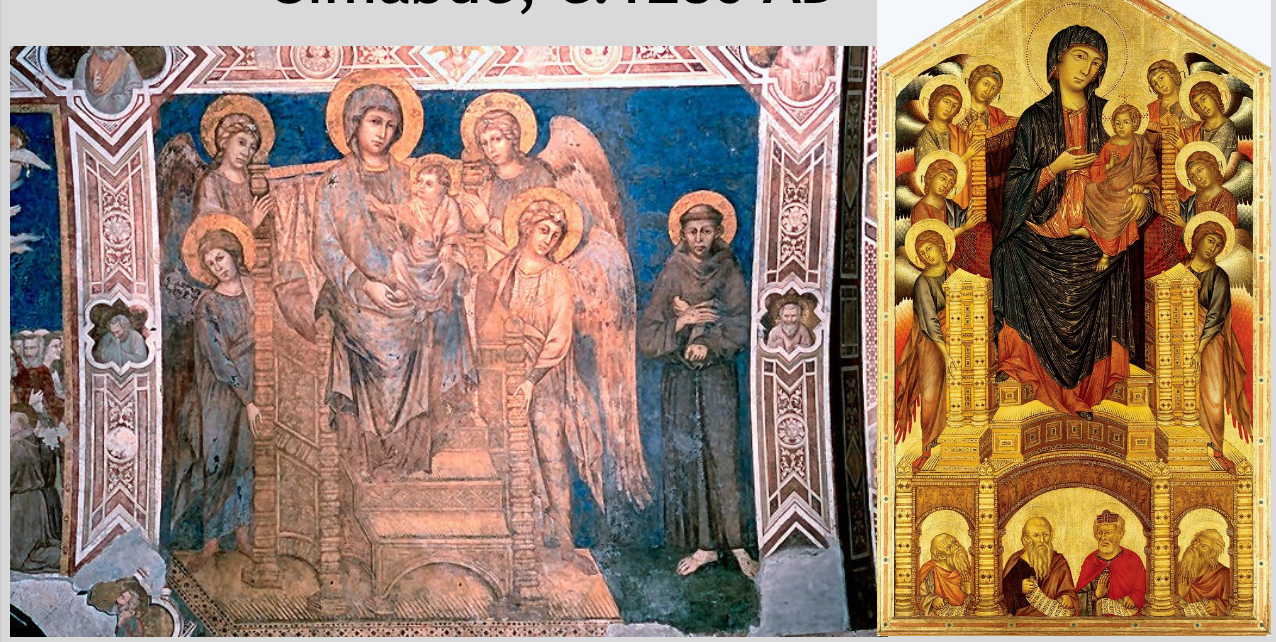
Cimabue Fresco, Maestà with Saint Francis, Basilica (LOWER) of St. Francis (1280 AD)
dry fresco
compare with his altarpiece earlier for style development
Mary on wooden throne
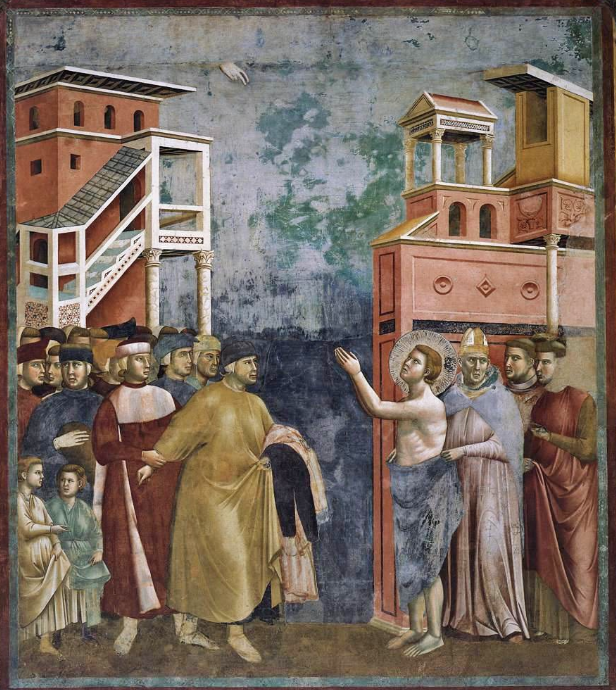
Giotto Fresco, Francis Renounces His Inheritance, Basilica (UPPER) of St. Francis (1295-1301 or 1330)
true fresco (giornatta)
upper basilica
some of his landscapes are very realistic
perspective returning after 1000 years
emotion and action
Francis’ dad is ready to punch him
Children are ready to throw stones
Radical change made by Francis is reflected in the radical change of art by Giotto that points towards the Renaissance
Scrovegni (Arena) Chapel 1305-1306, Padova
GIOTTO’S MASTERPIECE
Patron: Enrico Scrovegni built it in the hope of saving his soul
Was attached to a palace at one point
30 scenes by Giotto
3 horizontal layers
true frescoes
1st full figure God the Father
LAMENTATION (GIOTTO, EXAMPLE FROM SCROVEGNI CHAPEL)
mountain leads eye down to focal point = Christ
emotion, mourning, human suffering
even angels are lamenting
dead tree
Giotto starts to make a name for artists in Art History!
dry fresco
pigment added to dry fresco - easier but more risky because the paint could chip off
giornata (pl. giornate)
section of plaster that a fresco painter expects to complete in 1 session